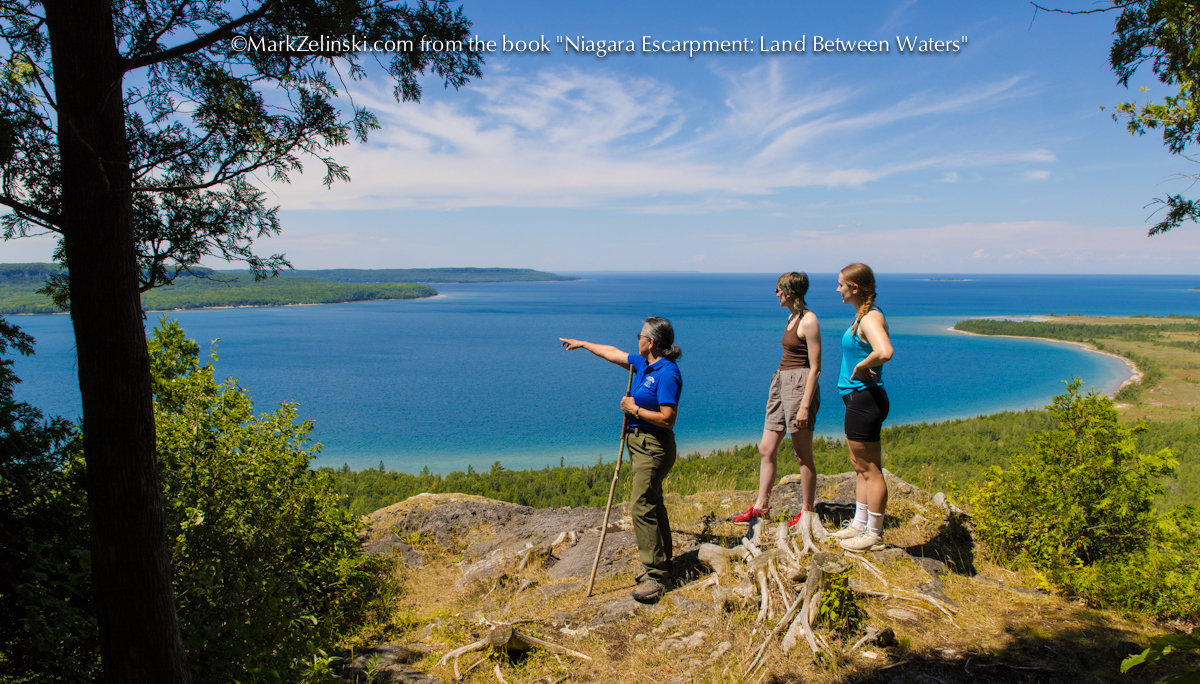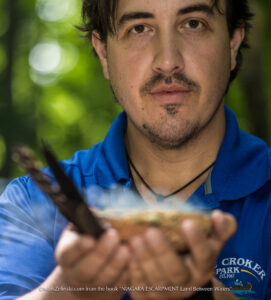NIAGARA ESCARPMENT BIOSPHERE NETWORK BLOG
14/03/2023
Cape Croker Park
14/03/2023

Since time immemorial, my Anishinaabe ancestors have been intrinsically connected to Mother Earth. We explored her woods, rivers, lakes, mountains, and plains. From Mother Earth came our food, medicine, clothing, language, and stories. Understanding the importance of the natural world and its processes is integral to understanding ourselves. Whether you are an outdoor enthusiast, an urbanite, or someone in between, it is indisputable that we need a healthy world to live in. John Muir once said, “When we try to pick out anything by itself, we find it hitched to everything else in the Universe.” I was raised with the innate understanding that we are part of the natural world, not above or outside.
I spent many of my formative years playing outside, developing a deep appreciation for nature. This has stayed with me throughout my life and directly influenced my education and professional career. It is one thing to understand the science behind biodiversity; appreciating its value and importance is something altogether different. The diversity of plant and animal life in my traditional territory, which includes large swaths of the Niagara Escarpment Biosphere, is essential for a healthy and balanced ecosystem. Walking through the forest, paddling down a river, or watching a beaver silently glide, half-submerged across a pond, evokes a feeling of wonder. Much of what I see would not be possible without the immense variety of living things, and without them, the world would seem duller.
Time and again, we are presented with examples of how detrimental the loss of a single species can be to its native ecosystems. We must take those examples as lessons of how to improve and be better as humans. All species, large or small, have a role in maintaining that fragile balance between a healthy and unhealthy ecosystem. The Niagara Escarpment contains phenomenally beautiful areas with countless plant and animal species. Conserving biodiversity in these areas provides myriad benefits, from environmental to economic, tourism to health, and the daily difficult-to-measure intrinsic benefits that nature gives us.
I am the Interpretive Program Coordinator for Cape Croker Park, developing and leading immersive, land-based cultural programs. I, and my colleague, Lenore Keeshig, established Anishinaabe Cultural Experience programs (www.capecrokerpark.com) to educate visitors about our culture, history, and Mother Earth. The Niagara Escarpment Biosphere contains so many wonders. It is all but impossible to fully know all the species in our territory. Some are elusive and cautious. Some spend their lives underground. Some only come out at night. While others are so small that you might never see them without deep focus and patience. Despite all this, we must always appreciate their significance. If you wish to learn more about some of these species, connect more deeply with Mother Earth, or breathe in the wonders of the natural world, Anishinaabe Cultural Experiences can connect you to the Niagara Escarpment in amazing ways.
— Jason W. Johnston, MSc, is Interpretive Program Coordinator at Cape Croker Park, Chippewas of Nawash Unceded First Nation, Neyaashiinigmiing, ON.
